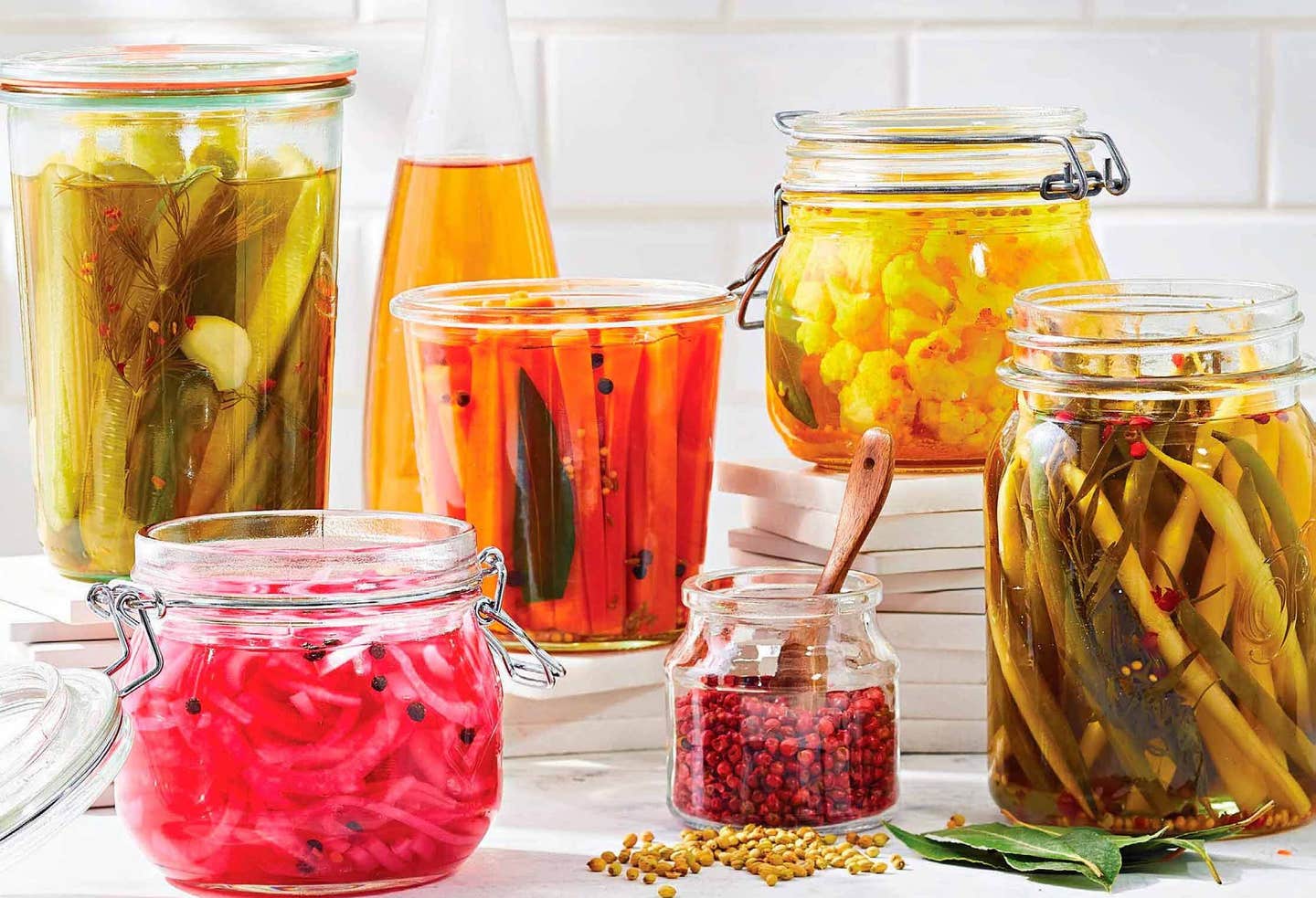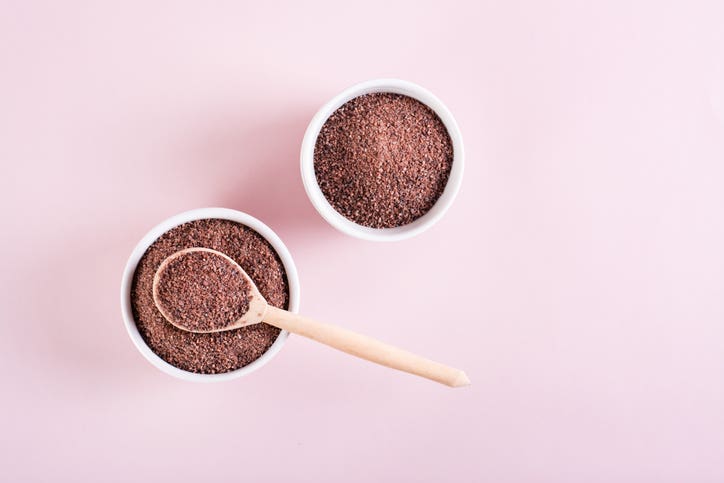
How to Quick Pickle Onions, Cukes, Green Beans and More: Easy Low-Salt Pickle Recipes
Brighten up snacks and meals with low-sodium, no-sugar, no-hassle quick pickles! You won’t believe how tasty homemade pickles can be, using zero added sugar and just a fraction of the salt found in store-bought pickles. And there’s no need to sterilize the jars. Read on for an overview of the quick-pickling process and a base recipe for low-salt brine, plus five of our favorite ways to use it.
Note: Using less salt means pickles won’t last more than a week (max), so make them in small batches and gobble them up.
How to Quick Pickle: The Basic Process
DIY low-sodium pickles are as easy as 1, 2, 3. Just follow these basic steps, and refer to the recipes below for more guidance and inspiration.
1. Fill a canning jar with veggies.
Place seasonings in the bottom of each jar, then pack with trimmed raw vegetables. Feel free to mix and match different veggies (anything goes except for potatoes and winter squash) in the recipes below, or come up with your own seasoning combinations.
2. Top with brine.
Follow the Low-Salt Quick Pickle Brine recipe. You’ll need about 1 cup brine per 12-oz. Jar. Pour the hot brine over the vegetables in the jar, making sure they’re completely covered.
3. Marinate in the refrigerator for 24 hours.
Seal the jar, then shake well to distribute the seasonings throughout the brine. Cool to room temperature. Refrigerate at least 24 hours to allow flavors to develop. Store in the fridge up to a week.
Low-Salt Quick-Pickle Brine Recipe
Any vinegar except balsamic can be used to make this reduced-sodium pickle brine. Makes 2 cups.
- 1¼ cups water
- ¾ cup vinegar
- 1 tsp. sea salt
1. In a medium saucepan bring all ingredients to boiling over medium. Simmer 15 seconds or until salt has completely dissolved.
2. Immediately pour hot brine over the vegetables to be pickled.
DIY Quick-Pickle Combos to Try
You can use the brine recipe and process outlined above to pickle any vegetables you like. But to get you started, here are a few of our go-to recipes.
1. Dill Pickle Spears
Place 1 large sprig fresh dill (or 1 tsp. dried dill), 1 clove peeled garlic, and ⅛ tsp. crushed red pepper in the bottom of a 16-oz. canning jar. Pack jar with cucumber spears (from 1 medium cucumber). Pour hot Low-Salt Quick Pickle Brine over top; seal jar. Refrigerate at least 24 hours and up to 1 week.
2. Pickled Red Onion
Fill a 12-oz. canning jar with thinly sliced red onion (from 1 small onion). Add ⅛ tsp. whole black peppercorns. Pour hot Low-Salt Quick Pickle Brine over top; seal jar. Refrigerate at least 24 hours and up to 1 week.
3. Cumin-Laced Pickled Carrots
Place 1 bay leaf and ½ tsp. each cumin seeds, whole black peppercorns, and mustard seeds in the bottom of a 12-oz. canning jar. Pack jar with carrot sticks (from 2 large carrots). Pour hot Low-Salt Quick Pickle Brine over top; seal jar. Refrigerate at least 24 hours and up to 1 week.
4. Golden Cauliflower Florets
Place 1 white onion slice; ¼ tsp. each mustard seeds, coriander seeds, and ground turmeric; and 1 small bay leaf in the bottom of a 12-oz. canning jar. Pack jar with small cauliflower florets. Pour hot Low-Salt Quick Pickle Brine over top; seal jar. Refrigerate at least 24 hours and up to 1 week.
5. Pink Peppercorn Green Beans
Place ½ tsp. each mustard seeds and whole pink peppercorns, 1 sprig fresh tarragon, and 1 clove peeled garlic in the bottom of a 12-oz. canning jar. Pack jar with 2 oz. trimmed green beans. Pour hot Low-Salt Quick Pickle Brine over top; seal jar. Refrigerate at least 24 hours and up to 1 week.

About the Author

About the Author
Mary Margaret Chappell
Join our mailing list
Get free recipes and the latest info on living a happy, healthy plant-based lifestyle.
By providing your email address, you consent to receive newsletter emails from Forks Over Knives. We value your privacy and will keep your email address safe. You may unsubscribe from our emails at any time.